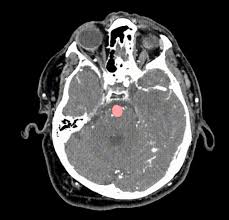
5G Rollout Completed Across Southeast Asia A Digital Leap Forward
In a significant technological milestone, Southeast Asia has officially completed the rollout of commercial 5G networks across all its major metropolitan areas. From Jakarta and Bangkok to Manila and Kuala Lumpur, consumers and businesses alike are now experiencing the low latency, high capacity promise of next generation mobile connectivity. This regional achievement coordinated through public private partnerships, cross border regulatory alignment, and targeted infrastructure investment marks a new chapter in Southeast Asia’s journey toward a digital first future.
A Race Toward Regional Connectivity
The push for 5G began nearly two years ago as governments recognized the technology’s potential not only for faster mobile internet but as a foundation for industrial modernization, IoT ecosystems, telemedicine, and smart cities. Telecom operators across the region, including Indonesia’s Telkomsel, Malaysia’s Digi and Celcom, Thailand’s AIS, and the Philippines’ Globe Telecom, have built out tens of thousands of 5G cell sites. Regulatory bodies expedited spectrum licensing and aligned standards through regional bodies like ASEAN’s ICT Council to avoid cross border interference. As a result, urban centers now enjoy average download speeds above 800 Mbps, with latency reduced to under 5 ms a leap even over wired broadband in many places.
Boosting Industry and Smart Urban Solutions
For industry, 5G unlocks automation and real time data analytics at scale. Smart manufacturing plants in Penang and Ho Chi Minh City are now piloting networked robotic assembly lines, while agriculture projects across Thailand use remote sensors to optimize irrigation, fertilizer use, and pest control. Infrastructure monitoring such as real time inspection of bridges and pipelines using 5G connected drones has expanded both pace and precision. Meanwhile, testbeds in Singapore and Kuala Lumpur are showcasing connected traffic systems that adapt signals dynamically based on vehicle flow, reducing congestion and emissions in fast growing megacities.
Expanding Access to Telehealth and Education
In the realm of services, telehealth has taken a leap. In the Philippines, remote clinics in rural provinces are now streaming high definition consultations with specialists in Metro Manila, enabling timely diagnoses and minimizing travel for patients. In Malaysia, mobile health units use 5G to send live vital sign feeds to urban hospitals, improving emergency response times. Education, too, is benefiting 5G powered AR/VR classrooms in Indonesian schools offer immersive science lessons allowing students to explore digital simulations of volcanoes or deep sea ecosystems in rural villages with little prior access to such tools.
Fueling the Startup and Innovation Ecosystem
The startup ecosystem across Southeast Asia is booming in response to 5G’s rollout. Singapore based developers are creating apps for crowd monitoring during festivals, while Indonesian agritech ventures offer real time crop condition insights via edge sensors. Thai startups are experimenting with cloud gaming services delivered directly to budget smartphones a challenge previously unviable on slower networks. Several national innovation funds have launched accelerator programs aimed at nurturing 5G based solutions with export potential, fueling momentum toward digital entrepreneurship across the region.
Bridging the Urban Rural Divide
Yet while city centers now glow with 5G speeds, rolling out the technology in rural and less developed areas remains a challenge. Operators are deploying hybrid models using fixed wireless access towers and 5G repeaters to extend coverage to smaller towns and agricultural zones. Multi country infrastructure projects, such as fiber and microwave link sharing, are being actively developed to support backhaul needs. Governments are also balancing affordability subsidized data bundles and pay as you go plans aim to lower adoption barriers among lower income groups.
Security, Infrastructure, and Policy Readiness
The transition to 5G has prompted a fresh focus on cybersecurity, data privacy, and infrastructure resilience. Multiple nations in the region have updated cyber laws to cope with more distributed network topologies, mandating secure design standards for edge systems and mandating encryption for critical infrastructure. Regional task forces are now coordinating threat intelligence between operators and law enforcement. Additionally, network providers are experimenting with network slicing, enabling virtual private, high security channels for critical industries like finance, energy, and healthcare.
Economic and Social Impact Projections
Analysts project that full 5G adoption could contribute between USD 50 70 billion in additional GDP across Southeast Asia by 2030, largely through boosted productivity and new business lines. More immediate gains include improving access to digital services by an estimated 40 million new users among underserved communities. Already, small and medium enterprises report improved online capacities, enabling growth in e commerce, logistics tracking, and enhanced digital customer engagement. Brands and service providers are also finding greater reach culturally and economically through multimedia rich mobile advertising, live commerce, and micro video platforms.
The Road Ahead Toward 6G and Beyond
Completing 5G rollout is not the end it marks a foundation for further digital evolution. The region is now turning its gaze toward 6G research and advanced use cases that leverage integrated satellite connectivity, AI driven network optimization, and ultra reliable low latency links for remote surgery or industrial robotics. Cross border corridors from Jakarta to Kuala Lumpur to Singapore are being tested for seamless 5G handoffs to support logistic automation and autonomous vehicles. In the next phase, Southeast Asia plans to unify its digital markets, enabling pan regional services and cross border digital “free zones” that leverage the high speed connectivity now available.
Southeast Asia’s successful 5G rollout is more than a technical achievement it is a springboard for innovation, inclusion, and economic advancement. By combining collaborative regulation, private sector investment, and forward looking policy, the region is rewriting its digital narrative. if in classrooms, farms, factories, or healthcare, the network of tomorrow is already making a tangible impact today.
Related Post
Popular News
Subscribe To Our Newsletter
No spam, notifications only about new products, updates.















